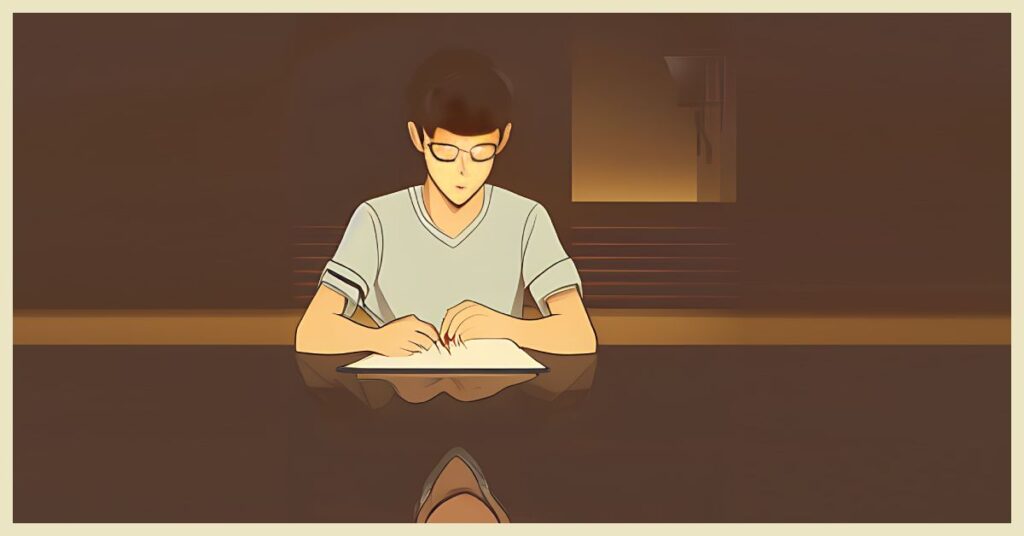Last updated on December 28th, 2022
Editing is an essential part of the writing process and can make all the difference between a good piece of writing and a great one. In this article, we’ll explore the art of self-editing and provide tips for writers on how to get the most out of the editing process.
From understanding the basics of the editing process to mastering the fundamentals of effective editing, we’ll cover the key elements you need to know to ensure your writing is polished and ready for publication.
The Importance of Self-Editing
Solid editing is the key to excellent writing, and editing your own writing is an essential part of the process. It is important for writers to take the time to read through and edit their work before submitting it for publication.
Editing your work can improve the quality of writing and make it more readable, helping it to stand out from the competition. It can help identify and correct any grammar, spelling, and punctuation errors that may have been overlooked. It can also help make a piece of writing more concise and clear by removing unnecessary words or phrases and identifying any areas of confusion or ambiguity. This helps ensure readers understand the intended message and makes a piece more enjoyable and engaging.
By taking the time to re-read your work, you make sure that your writing is polished and professional and meets the target audience’s standards.
What is Good Editing?


Generally, the process involves multiple steps with the goal of making your writing compelling, readable, engaging, and professional. Here’s an overview of the types of tasks involved:
- Audit the content for organization and flow. This process includes checking for a logical sequence of ideas, transitions between paragraphs, and the piece’s overall structure.
- Review the content for style and tone, including considering the audience and determining if the writing is appropriate for them. It also involves making sure there is consistency throughout the piece and that the style is suitable for the subject matter.
- Check the content for accuracy by verifying facts, checking sources, and double-checking any quotes.
- Fix any grammar and spelling mistakes.
- Review the content for readability. This involves making sure the content is easy to read, the sentences are not too long, the words are not overly complicated, and overall engaging for the reader.
How Often Should You Edit?
When it comes to editing, there is no one-size-fits-all answer. The amount of editing required depends on the individual writer and the type of project they are working on. Here are some general guidelines to follow when considering how often you should edit:
- Always edit after completing the first draft. Even if you’ve done a reasonably thorough job of self-editing, giving your work another pass before submitting it for review is important.
- For shorter pieces, such as blog posts, aim to edit the work at least twice before publishing. This will help you catch any errors or typos that may have slipped through the cracks.
- If you’re working on a more extended project, such as a book, it’s important to edit more frequently. It’s best to break your editing down into several passes and take a break between them to give yourself a fresh set of eyes.
- If you need help determining when to edit, try setting deadlines for yourself and breaking the project down into smaller chunks. This will help you stay on track and work more thoroughly.
Ultimately, the key to successful editing is to make sure you’re taking the time to review your work with a critical eye. The more time and effort you put into the process, the better your final product will be.
Are Editing and Proofreading the Same?
Editing and proofreading are two different steps in creating polished, publishable writing.
Editing is the process of assessing, correcting, and refining the writing content. This could involve reorganizing or rewriting sections or even completely changing the piece’s focus.
Proofreading, on the other hand, is a much more precise process. Once the editing is complete, proofreading involves reading the text to detect grammar, spelling, punctuation, and formatting errors.
While both involve making corrections, they are two distinct processes. It is essential to understand them both to create high-quality and professional writing.
Editing & Proofreading Tips for Writers
Here’s our checklist of the top editing tips for writers to help you get the most out of your work:
Don’t Try to Edit While You Write


First of all, editing and writing are two very different things. Writing is the creative process of getting your ideas down on paper. Editing is the process of refining and perfecting the written piece. Trying to do both simultaneously can be a recipe for disaster. When writing, focus on getting your ideas down without worrying about grammar, punctuation, or spelling. Save the editing for later!
Start Zoomed Out
Begin by focusing on the big picture first. Avoid the temptation to correct minor mistakes immediately, which can lead to overlooking more significant issues and creating more work for yourself in the long run. For example, you may unnecessarily spend time fixing spelling or grammar on sections that you ultimately rework or remove entirely.
On your first pass, look for high-level issues like plot holes and inconsistencies, pacing issues, scenes that need to be developed further, or character arcs and resolutions. Think of it like an ice cream cone: begin with broad structural changes and then narrow to more specific edits.
One way to get a higher-level perspective of your work is using the following tip:
Read Your Work Out Loud
Reading your written work aloud to yourself is a great way to identify errors and awkward phrasing. When you read something out loud, you are forced to slow down and really listen to what you are saying. This allows you to pick up on words that don’t sound quite right, sentences that don’t make sense, or typos that you might have missed.
Additionally, reading aloud can help you get a sense of the rhythm and flow of your writing, allowing you to make adjustments, so your writing is more engaging and effective.
Talking aloud instead of mumbling to yourself or thinking quietly in your head can be beneficial. To make it even more helpful, try talking to someone else; your pet, a significant other, a buddy, or members of a writing group. However, it may be best not to read to other customers in the café or to a captive audience of other people on public transportation!
Get Feedback from Others
Don’t be afraid to ask for help. Having a friend, colleague or mentor read your work with a critical eye can provide you with valuable feedback that you may not have noticed yourself. Please encourage them to be honest and make suggestions for improvement. Be grateful and open and take all feedback constructively. Think of it as an opportunity to learn and grow as a writer. And don’t forget to say thanks by returning the favor somehow!
Shifting from Passive to Active Voice
Active voice is a writing style in which the subject of the sentence performs the action. For example, instead of writing “the ball was thrown by the boy,” you would write “the boy threw the ball.” When editing, check for any sentences written in passive voice and to rewrite them in active voice.
Active voice is generally preferred because it gives the reader a more precise and direct understanding of the sentence. It is more concise and is often perceived as more natural and engaging, which can help make writing more exciting for readers. Active voice also tends to be easier to read and understand, making it more enjoyable for the reader.
Cut Out Unnecessary Words and Phrases


Focus on getting your point across with less. Every word should have a purpose, and if a sentence doesn’t contribute to the overall point of the paragraph, prune it. Even if a sentence is well-crafted, it should be removed if it doesn’t have a purpose.
Be ruthless when editing, and don’t be afraid to make bold cuts. Deleting your writing is one of the most challenging things to do as a writer, but it is essential to great writing.
It’s also important to vary the length of your sentences. Too many short sentences can make writing seem choppy and disjointed. Conversely, too many long sentences can make writing seem overly complex and convoluted. Varying sentence length adds flow and interest to your writing, making it easier to read. Pay attention to the structure of each sentence and make sure the point is easy to understand.
Reduce Adverbs
Adverbs can weaken your writing by making it overly wordy and indirect. They often require extra words to express the same concept, making your writing sound clunky and awkward. Additionally, many adverbs are vague and don’t give the reader an exact image of what you’re trying to convey. Writing without adverbs can improve your writing to be more precise and clear.
Show & Tell
Showing involves using sensory details, metaphors, vivid language, and other literary devices to create a clear image, while Telling is a straightforward, factual account of what happened. Showing is often preferred to telling because it engages the reader and invites them to form their own interpretations. It also helps to create a more natural and immersive experience for the reader, allowing them to “see” the story unfold in their mind’s eye.
Sometimes you’ll have to recount what happened to the reader for context or framing, but try to show them instead, so they get there on their own, which is more interesting and dynamic.
Check for Grammar and Spelling Errors
Making sure your post is free of grammar and spelling errors will help you ensure that you are putting your best foot forward. Taking the time will give your readers a better experience and help you make a more professional impression. One option to make this process more efficient is to use an online tool such as Grammarly to help you identify areas that need improvement.
A reminder about spellcheckers: they may flag typos and incorrect spelling, but they generally won’t detect when you’ve used the wrong word. For example, if you wrote “there” instead of “their,” the spellcheck won’t pick up on it because “there” is still a word, even though it wasn’t what you meant to write.
Use a Style Guide
A style guide is a set of rules and guidelines for a particular type of writing, such as fiction, journalism, or technical writing. Following the guidelines of your chosen style guide will help ensure consistency throughout your work.
Having a style guide can help make the writing process simpler and more efficient. They can provide helpful information on formatting, grammar, and punctuation. For example, if you are writing a novel, the guide might provide guidance on the correct way to format dialogue, how to punctuate dialogue tags, and how to structure chapters.
Get Professional Assistance


A professional editor can be an excellent resource for ensuring your work is polished and ready to go. Whether you’re writing a book, a blog post, or a business proposal, an editor can help you fine-tune your writing and make sure it is as close to perfect as possible.
Professional editors can also help with proofreading, content editing, and even rewriting sections that need extra attention. With their help, you can be sure that your work is top-notch and will impact the people you are trying to reach.
Bonus: Take Breaks
Editing can be an exhausting process, so don’t be afraid to take breaks. Step away from your work and come back with fresh eyes. This will help you notice mistakes you might have missed during a long editing session. Taking short breaks throughout your process can also help maintain your focus and enthusiasm.
Finally, take your time and be patient. Editing is a skill and a process that requires practice and dedication and is an essential part of writing. It can be a daunting task, but following the tips in this guide can make your work shine. By taking the time to edit your work, you will be able to produce a final product that you can be proud of. You can become an efficient editor and a more confident writer with practice and patience.




